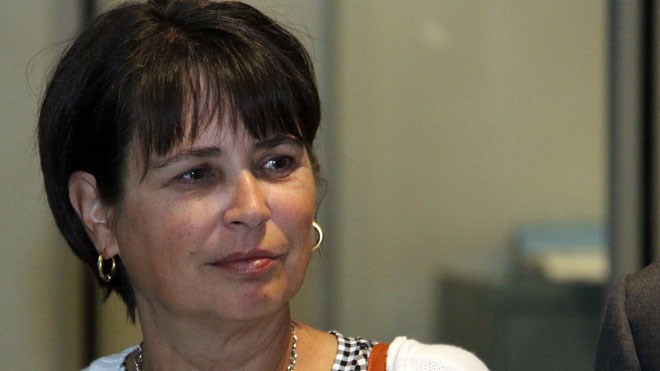Guidelines for high visibility clothing in mines was one of four new recommendations the province's Mining, Health, Safety and Prevention Review made in its progress report.
“We don't want anybody else to suffer a fatality in mining,” said Labour Minister Kevin Flynn, who announced the new report Wednesday morning.
The first initiative was the implementation of new best practices guidelines for high visibility apparel in the mining sector.
“We learned that new technologies and new equipment are causing problems with worker visibility in mines,” said Flynn, referring to the health and safety review process that started in January 2014.
The Ministry of Labour took cues from the construction sector, and created new guidelines for bright and visible clothing.
“Our mine inspectors will now refer to them when determining if a workplace is taking all the necessary precautions for the safety of workers,” Flynn said.
George Gritziotis, Ontario's chief prevention officer, and chair of mining health and safety review, said the high visibility apparel is a guideline for now, but could be backed by regulation early next year, when the final report is released.
“What most employers would like to be doing is getting prepared for something that could potentially become a likelihood for regulation,” Gritziotis said.
The Ministry of Labour also updated its Joint Health and Safety Committee Certification Training Program.
Training through the program will focus on a minimum of six hazards and strengthen the mining sector's internal responsibility system.
The progress report also described Ministry of Labour support for two mining health and safety research projects.
The first is the creation of the Ontario Mining Exposure Database. The ministry reached out to the Occupational Cancer Research Centre to build a database that will track incidents of illness and miners' exposure to a number carcinogenic substances.
The database will help the mining sector prevent exposure to dangerous substances and predict the future risk of disease among workers.
Gritziotis said the Occupational Cancer Research Centre is at the very early stages of analyzing past data on exposure to carcinogenic substances, and will build the new database on that foundation.
The Ministry of Labour has also funded research by Laurentian University's Centre for Research in Occupational Safety and Health (CROSH) on foot-transmitted vibrations for operators of underground mining equipment.
CROSH received two grants in July – one for $58,836 and the other for $49, 861 – to develop an inexpensive tool that can measure a worker's exposure to vibrations, and work on protective equipment, such as mats and special boots, to reduce vibrations.
CROSH director Tammy Eger said vibrations from underground mining drill platforms can lead to blanching of the toes, decreased circulation and neurological damage in the toes and feet.
Early research has suggested exposure to excessive vibrations can also increase a worker's risk for slip or fall injuries.
Eger said CROSH has been working with Montreal-based boot company STC Footwear to test different boot materials and see how they reduce vibrations.
Wendy Fram, the mother of Jordan Fram, who was killed in a run of muck at the 3,000-foot level of Vale's Stobie Mine in Sudbury on June 8, 2011, said she was pleased with the early actions from the mining health and safety review.
“I'm feeling good about it,” Fram said. “People have done an awful lot of work and dedicated their time and effort to it.”
Fram said she hopes the issues that contributed to her son's death, such underground water management , will be addressed in the review's final report.
Water accumulation was identified as a “key issue” in Wednesday's progress report.
Gritiziotis said the key issues identified to date, which also include the role of Ministry of Labour inspectors, and underground hazards, such as fall of ground, will be addressed in the final report.
Rick Bertrand, president of United Steelworkers Local 6500 said he was happy to see forward momentum with the health and safety review.
“We want to make sure the mines are safe and that people come home safely,” he said.
The United Steelworkers had originally advocated for a mining health and safety inquiry, but later agreed to the province's plans for a review instead.
Flynn said going the review route has allowed the government to make immediate changes.
“We knew that if we found things that needed to be changed quickly, we could,” Flynn said. “We didn't have to wait for the final report.”
Michael Mantha, the NDP's Northern Development and Mines critic, said his party will push for an inquiry if the mining health and safety review's final report does not address key issues.
“Action is what stakeholders, the labour movement and families have been asking for, fora very long time,” he said. “No worker deserves to go to work and not return to their families.”
The review's final report is expected to be released in early 2015.
